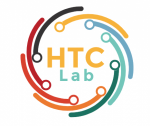In recent years, the advancement of open science has led to data sharing becoming more common practice. Data availability has clear merits for science as it opens up possibilities for re-use of datasets by others, leading to less redundancy, more efficiency, and more transparency. The ideal is for scientific data to be as open as possible and FAIR: Findable, Accessible, Interoperable, and Reusable. Parallel to this development, recent times have seen more stringent guidelines with respect to data privacy, culminating in the General Data Protection Regulation law, or GDPR. Navigating the balance between protecting participants’ privacy and making one’s dataset as open as possible can be challenging for researchers. In this paper, we provide two worked examples with real datasets from the behavioral and social sciences on how to be as open as possible and as closed as necessary, with the goal of maximally facilitating science while minimizing the risk of participant identification.
Latest posts by Ryan Watkins (see all)
